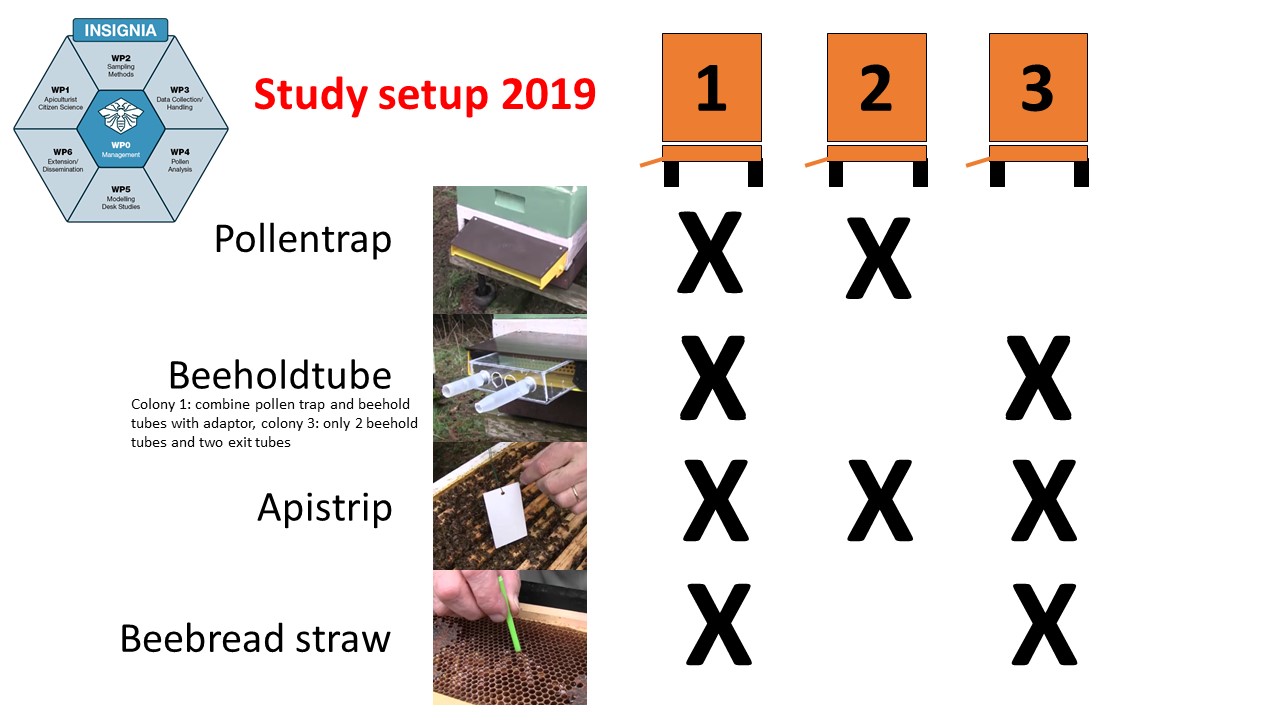Everything prepared, and ready to collect information from our bees’ environment. Three colonies from Graz, Austria with everything installed according to the 2019 study setup!
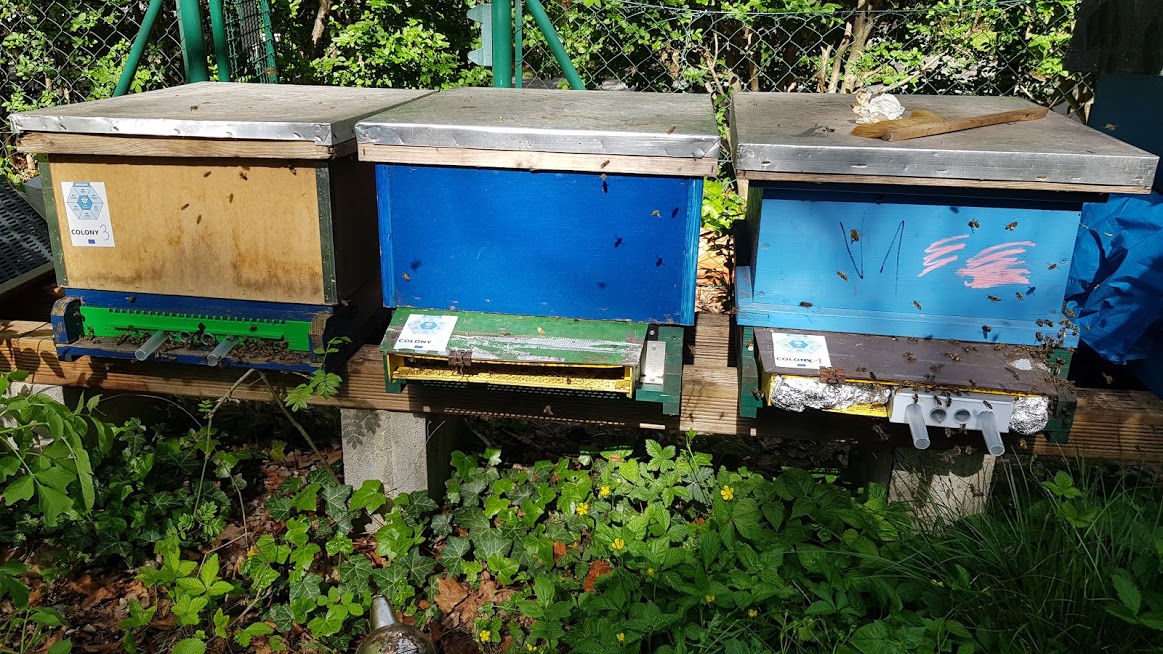

PREPARATORY ACTION FOR MONITORING OF ENVIRONMENTAL POLLUTION USING HONEY BEES
Everything prepared, and ready to collect information from our bees’ environment. Three colonies from Graz, Austria with everything installed according to the 2019 study setup!

This weekend is the setup for the 2019 sampling in Austria, Denmark, Greece and the UK. Pollen traps will be put on to the hives for the bees to get used to them, together with BEEHOLD tubes and APISTRIPS. The first samples will be collected in a fortnight’s time. In the UK, four apiaries will be used in Hertfordshire, Surrey (2) and East Sussex. The sites provide a range of landscapes from a national nature reserve with heathland and woodland to urban areas.

Sometimes it can be difficult to have an overview on what is going on in a project. Follow Sjef van der Steen on this video tour in one of our apiaries explaining in detail what will start during this and next week in the INSIGNIA project.
INSIGNIA field test year 1 (2019). Year 1 field test is performed in Denmark, Austria, England and Greece.
Follow INSIGNIA on our YouTube channel: Search for INSIGNIA BEE
As part of the INSIGNIA project, we are also conducting a sociological portion and the interviews with the Citizen Science beekeepers are underway! We are looking to gain a deeper understanding of the expectations and experiences of the beekeepers in hopes of improving their participation experience in the second year as well as building upon their hands-on knowledge of using the novel sub-sampling devices in order to keep improving them.
We will be interviewing Citizen Science beekeepers in Austria, the United Kingdom, and Denmark throughout April and May, with follow-up interviews in June and July, to see how their experiences and needs change throughout the season. It is a great opportunity for our team to meet, interact and create a space for voicing concerns for the people on the ground that are making this project possible! We would also like to thank all the beekeepers for their hospitality and for taking the time to chat with us!
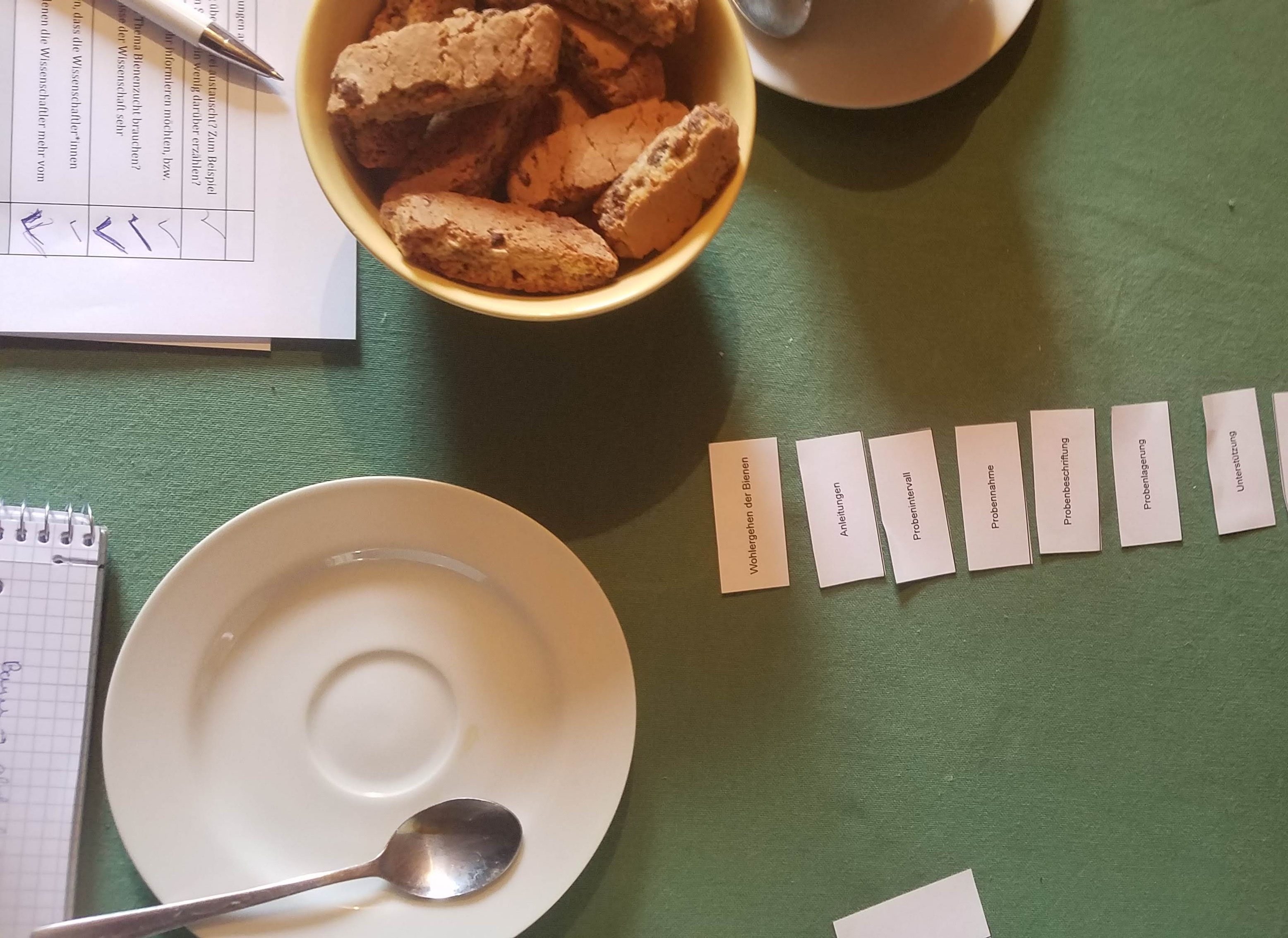
Written by Sarah Rose Bieszczad
Following an idea from an Austrian citizen scientist (thanks Andi!), I went to the workshop in the basement of university today, to modify a sliding gate hive entrance. In INSIGNIA, the third monitoring colony is used for Apistrips, beebread collection and the Beehold tubes. In contrast to colony 1, no pollen trap is installed, and hence no adapter can be placed to hold the tubes at the hive entrance. Therefore I made four holes in the sliding gate, to fit the two Beehold tubes (way in for the bees) and the two dummy tubes (way out for the bees).
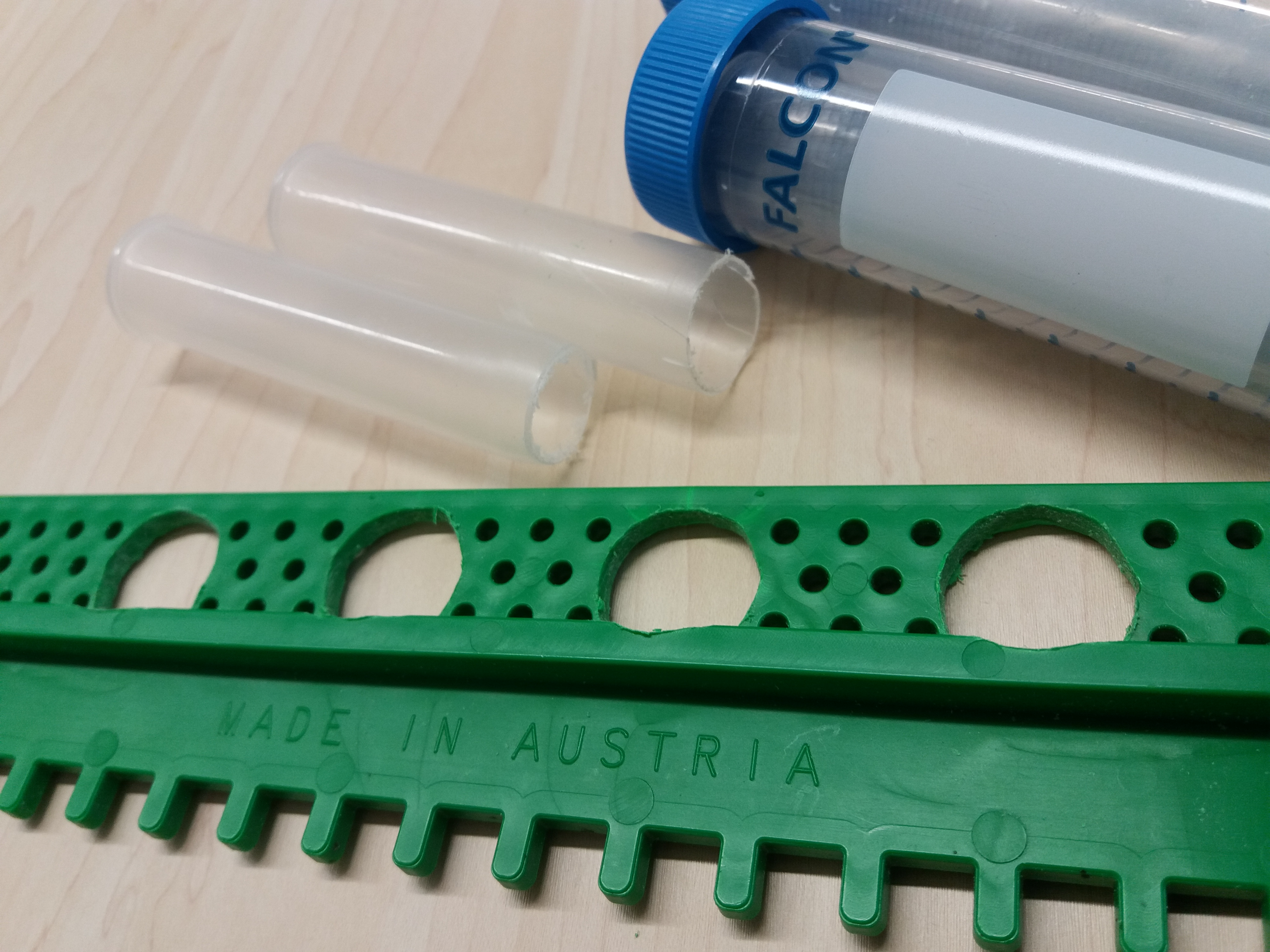
Continue reading “Colony 3 – No pollen trap but Beehold tubes!”
Is it possible to analyze the pesticides inside a beehive without taking the pollen nor the beebread, and with a passive sampling strategy? The INSIGNIA members think it is.
Tenax® is a material that adsorbs molecules onto its surface, providing information about the contaminants in a certain environment. It would be enough to glue it to a plastic strip placed inside the hives for a certain amount of time to get information about the pesticides in contact with the bees. The problem, however, is that Tenax® is commercialized as a fine powder. Bees try to remove it from their hives and, usually, they succeed.
After testing out many different materials and means to glue Tenax® to their surfaces, a different approach was adopted. Tenax® can be dissolved in dichloromethane, changing its granular appearance.

There were some things missing in the first package sent to INSIGNIA participants… Now the ApiStrips are ready. These strips contain TENAX, a substance that is adsorbing substances that bees bring into the hive. The strips are placed in all three test colonies, and remain in those for two weeks. We recommend to place the strips in central beelane (of the lower box). For mounting we recommend a wire (or bent paper clip, as shown in the picture below). Please use unique wires for each ApiStrip. After sampling, wrap ApiStrip in aluminium foil and store in labeled sample bags in the freezer.
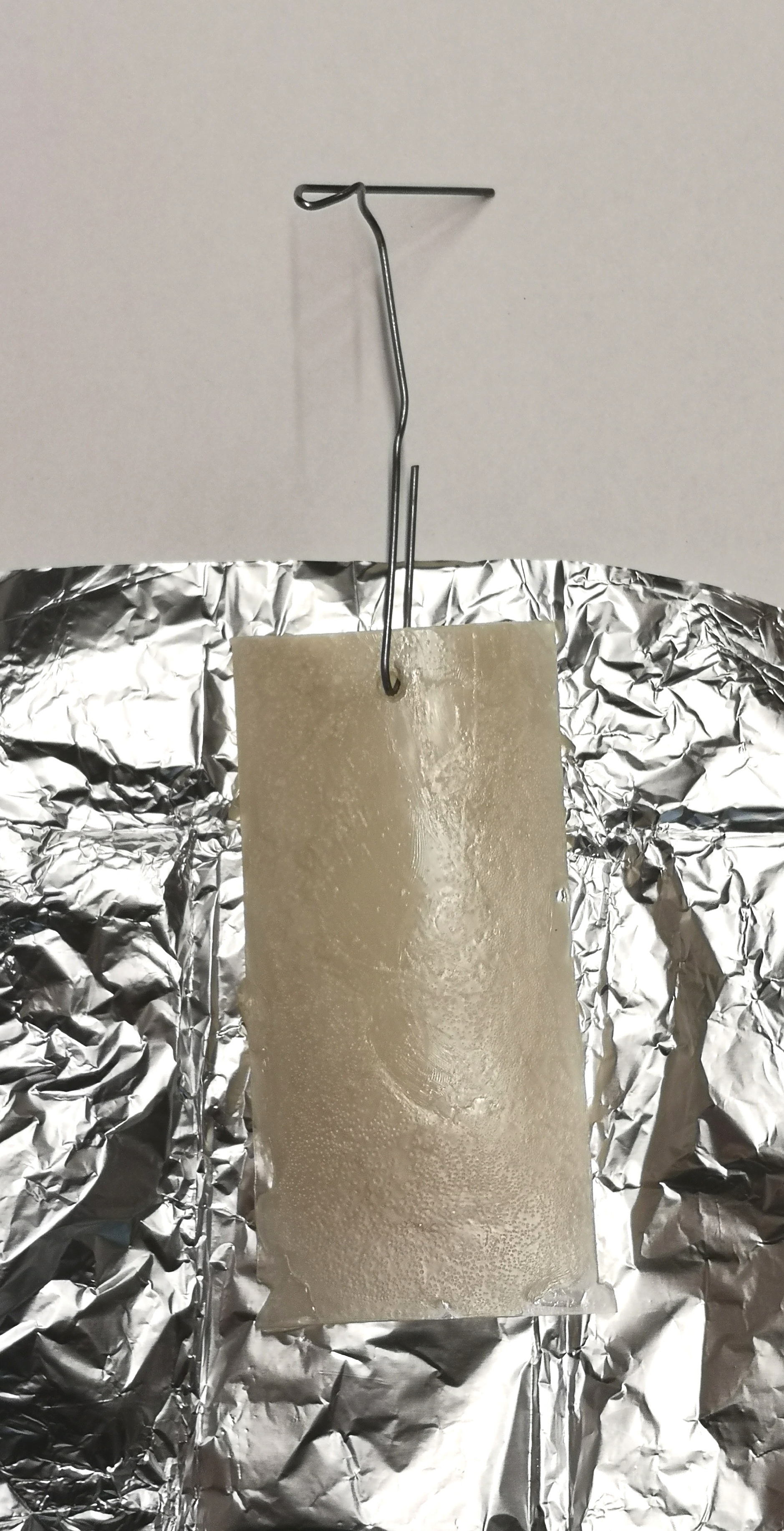
An article introducing the INSIGNIA project recently appeared in the March 2019 issue of the Scottish beekeepers’ magazine:
Alison Gray and the INSIGNIA Consortium, “Introducing INSIGNIA (environmental monitoring of pesticide use through honey bees”, The Scottish Beekeeper, 93(3), pp. 111, 113, 114. Continue reading “Presenting INSIGNIA in Scotland”
In the last days the parcels for citizen scientists were packed! Austrian citizen scientists all have their own pollen traps, so the other material was packed and send together with the picture manual to participants. Among others, it contains the sample bags, beehold tubes and the adapter for placing the beehold tubes in front of the pollen trap. Straws (for harvesting beebread) and stickers to label colonies are also provided. Though not complete yet, the picture below shows the content of the box for Austrian citizen scientists. Aluminium foil and disposable medical gloves may be added too!
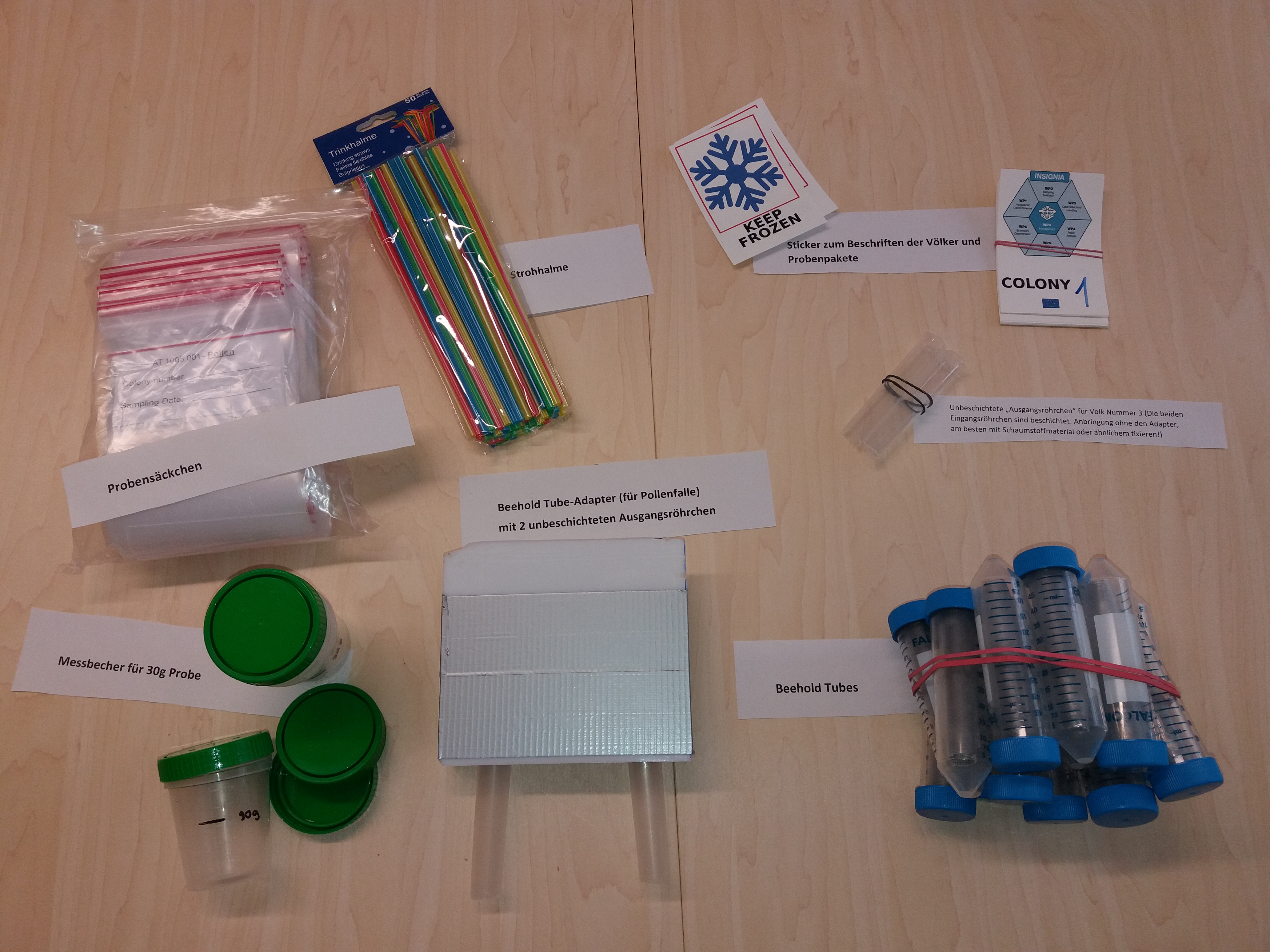

In 2019, four different methods to sample pesticides and pollen diversity will be tested and compared in four countries (Austria, Denmark, England, Greece). The tests will be made by citizen scientists, which need three honey bee colonies on one apiary.
Here is a very rough scheme of the study setup!
